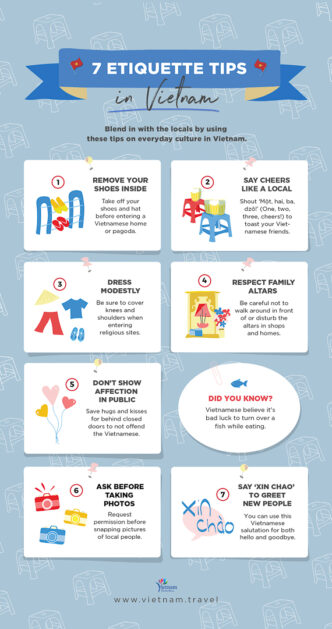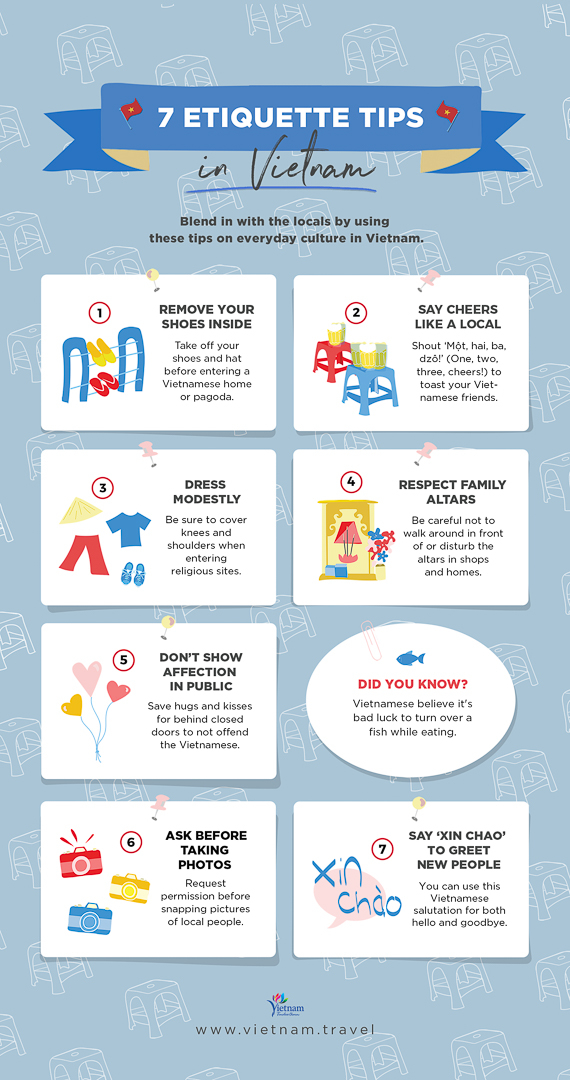Best Vietnam Travel Tips: A Comprehensive Guide
Traveling to Vietnam can be an unforgettable experience with its stunning landscapes, vibrant culture, and rich history. Whether you’re a first-time visitor or a seasoned traveler, it’s essential to know some Vietnam travel tips to ensure you make the most of your journey. In this guide, we’ll provide you with useful insights and advice to help you navigate Vietnam like a pro.
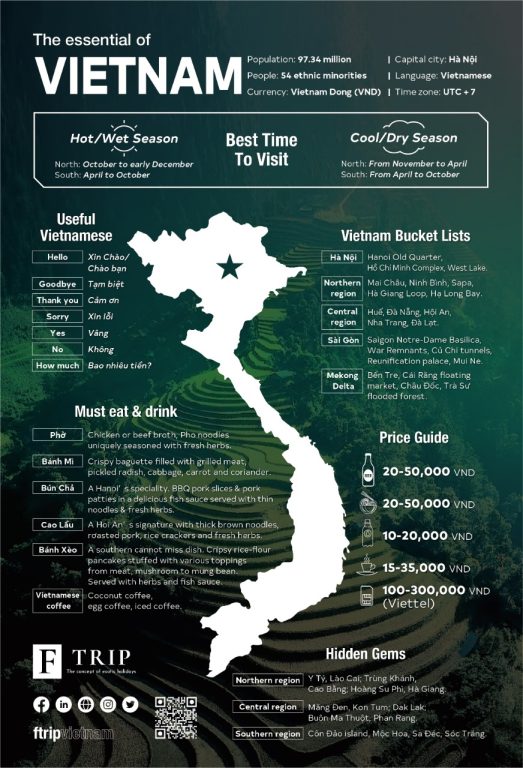
1. Understand Vietnam’s Weather and Best Travel Times
Vietnam’s diverse geography means the weather can vary drastically across the country. Northern Vietnam (Hanoi, Halong Bay, Sapa) experiences four distinct seasons, including a cold winter. Southern Vietnam (Ho Chi Minh City, Mekong Delta) is warm year-round with a distinct rainy season.
Best Times to Visit:
-
October to April: This period offers the best weather, especially for Northern and Central Vietnam.
-
May to September: It is the wet season in the South, but the rains are usually brief.
Plan your trip based on the region you plan to visit to avoid extreme weather conditions.
2. Cultural Etiquette: Respect Local Traditions
Vietnamese culture is deeply rooted in respect and tradition, so understanding local customs is crucial for a smooth and respectful experience. Etiquette is important in everyday interactions.
Key Etiquette Tips:
-
Greetings: A handshake is common, but always be gentle. In more rural areas, people may greet you with a bow.
-
Dress Modestly: When visiting temples or religious sites, it’s important to cover your shoulders and knees.
-
Shoes Off Indoors: Always remove your shoes before entering someone’s home or certain businesses.
Being aware of these norms will help you interact respectfully with locals and immerse yourself in the culture.
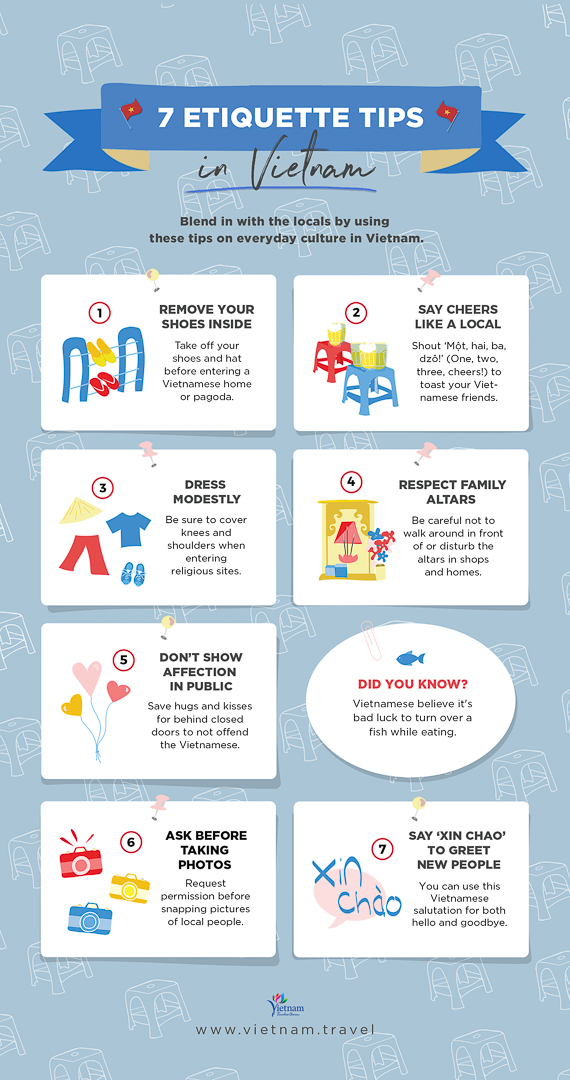
3. Money and Currency: Handling Vietnam’s Currency
The currency used in Vietnam is the Vietnamese Dong (VND), and it’s essential to familiarize yourself with the local exchange rates. While USD is widely accepted in larger cities and tourist areas, using the local currency will often get you better rates.
Tips for Handling Money:
-
ATMs: Withdraw cash from ATMs in larger cities. Be aware that some ATMs charge high fees for foreign cards.
-
Bargaining: Haggling is common in markets, so don’t be afraid to negotiate prices. However, do it politely.
-
Credit Cards: Credit cards are widely accepted in hotels, high-end restaurants, and shops, but it’s always a good idea to carry cash for smaller transactions.
Currency Tip:
-
Always keep small bills on hand for street vendors and small purchases, as they may not have change for larger notes.
4. Navigating Vietnam’s Transportation System
Vietnam’s transportation network is vast, with options ranging from buses to motorbikes and trains. It’s important to understand how to get around efficiently, as this will affect your travel experience.
Transportation Options:
-
Taxis & Ride-Hailing: Apps like Grab work well in major cities. Always make sure the meter is on or confirm the price before starting your ride.
-
Motorbikes: Renting a motorbike is a popular way to explore cities like Hanoi or Ho Chi Minh City, but traffic can be chaotic, so only consider this option if you’re comfortable with local driving conditions.
-
Trains: The train system connects major cities. It’s a scenic and comfortable way to travel between Hanoi, Hue, and Ho Chi Minh City.
-
Buses: Long-distance buses are affordable and connect smaller towns and cities. They are not as comfortable as trains but are a budget-friendly option.
Make sure to check local apps for transportation schedules and routes to avoid delays.
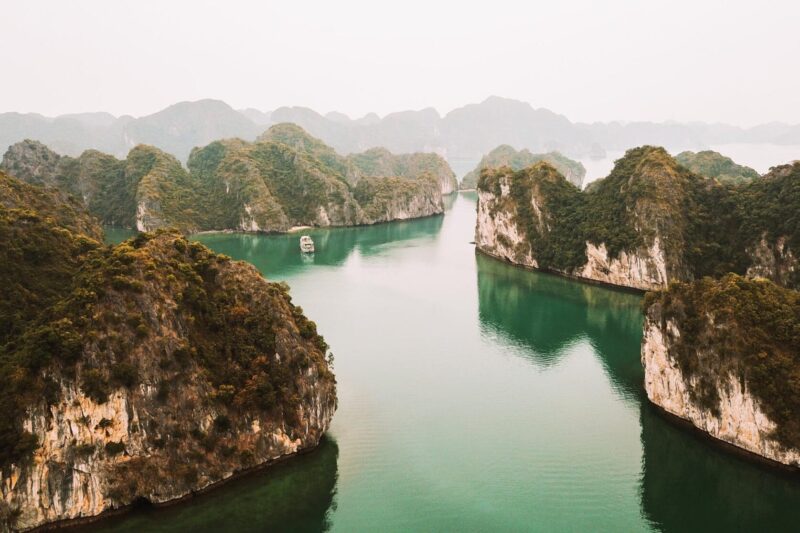
5. Street Food: Don’t Miss the Local Cuisine
One of the highlights of visiting Vietnam is its street food, which is not only affordable but also delicious. From pho (Vietnamese noodle soup) to banh mi (Vietnamese sandwich), the local cuisine is diverse and flavorful.
Street Food Tips:
-
Food Safety: Stick to busy food stalls or restaurants with lots of local patrons, as this typically indicates the food is fresh and safe to eat.
-
Must-Try Dishes: Don’t miss pho, goi cuon (spring rolls), and bun cha (grilled pork with noodles).
-
Eating Etiquette: It’s common to eat quickly and on-the-go in Vietnam. Don’t be surprised if locals slurp their noodles or rice.
Vietnamese food is an integral part of the culture, so make sure to try as many dishes as possible during your trip!
6. Language: Basic Vietnamese Phrases to Know
While many Vietnamese people working in tourism speak English, learning a few basic phrases in Vietnamese will go a long way in connecting with locals. Here are a few phrases to get started:
Basic Vietnamese Phrases:
-
Hello: “Xin chào” (sin chow)
-
Thank you: “Cảm ơn” (gahm un)
-
How much?: “Bao nhiêu?” (bow nyew)
-
Goodbye: “Tạm biệt” (tahm byet)
Locals will appreciate your effort, and it can make interactions smoother and more enjoyable.
7. Stay Connected: Internet and SIM Cards
Staying connected in Vietnam is easy, as the country has widespread internet access. You can find free Wi-Fi in most hotels, cafes, and restaurants.
Internet Tips:
-
SIM Cards: If you need mobile data, consider buying a local SIM card at the airport or a convenience store. Popular providers like Viettel, Vinaphone, and Mobifone offer affordable plans.
-
Wi-Fi: Most places in major cities offer free Wi-Fi. However, be cautious when using public Wi-Fi networks for sensitive activities like banking.
Staying connected will help you navigate, communicate, and share your experiences while traveling in Vietnam.
8. Safety Tips for Traveling in Vietnam
Vietnam is generally a safe destination for travelers, but like any popular tourist spot, it’s important to take safety precautions.
Safety Tips:
-
Watch Your Belongings: Petty theft, like pickpocketing, can occur in crowded places, so be mindful of your belongings.
-
Traffic: The traffic in major cities can be chaotic. Always be alert when crossing streets, as motorbikes and cars don’t always stop for pedestrians.
-
Health: Stay hydrated and use sunscreen, as the weather can be hot, especially in the southern regions.
By staying vigilant and prepared, you can enjoy a safe and memorable experience in Vietnam.

Frequently Asked Questions
1. Do I need a visa to travel to Vietnam?
Yes, most travelers will need a visa to enter Vietnam. You can apply for an e-visa online, which is quick and easy. Make sure to check the latest visa requirements before your trip.
2. What’s the best way to get around Vietnam?
The best way to get around Vietnam depends on the region you’re visiting. In cities, taxis or ride-hailing apps like Grab are convenient, while long-distance travel may be better suited to trains or buses. Renting a motorbike is ideal for short distances within cities.
3. Is Vietnam expensive to visit?
Vietnam is generally an affordable destination, with budget-friendly accommodation, food, and transportation options. However, prices can vary depending on where you are and what you’re doing. Tourist hotspots may be pricier, but there are plenty of budget options.
4. What’s the local food like?
Vietnamese cuisine is diverse and delicious. Expect a lot of rice, noodles, fresh herbs, and seafood. Each region has its specialties, so make sure to try local dishes wherever you go.
5. Is it safe to drink tap water in Vietnam?
It’s recommended to avoid drinking tap water in Vietnam. Always opt for bottled or filtered water to stay safe.
Conclusion
Vietnam is a beautiful country filled with rich history, vibrant culture, and stunning landscapes. By following these Vietnam travel tips, you’ll be well-prepared for an unforgettable adventure. From understanding local etiquette to navigating transportation and enjoying the local cuisine, these tips will help ensure a smooth and enjoyable trip. Safe travels and enjoy exploring all that Vietnam has to offer!
